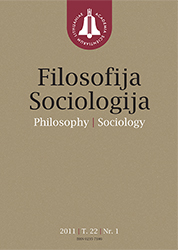A comparative analysis of gender differences in self-rated health: is the Baltic Sea a frontier of the East–West Health Divide in Europe?
A comparative analysis of gender differences in self-rated health: is the Baltic Sea a frontier of the East–West Health Divide in Europe?
Author(s): Rein Vöörmann, Jelena HelemäeSubject(s): Gender Studies
Published by: Lietuvos mokslų akademijos leidykla
Keywords: Estonia; Lithuania; Russia; Finland; self-rated health; gender
Summary/Abstract: Women have less access to and control over resources than most men. Such a pressure on men has implications for women’s and men’s health status. This paper explores the East–West health divide in Europe focusing on comparison of gender differences in self-rated health (SRH) in geographically close, historically highly connected but socially, politically and economically very different countries. Post-socialist Estonia, Lithuania and Russia are juxtaposed with highly developed social-democratic Finland. The first three countries belong to different strands of Christian culture, share 50 years common history, while moving away from the socialism in rather distinct directions and representing two different types of neo-liberal regimes. Data from the fifth way of the European Social Survey on 5 480 individuals from Estonia, Lithuania, Russia and Finland was used to test the gender differentials in exposure and vulnerability to neomaterialist and psychosocial factors of health inequalities. In general, results confirm the existence of the East–West health divide along the Baltic Sea with regard to gender differences in SRH. But the shape of this divide largely depends on particularities of the compared countries.
Journal: Filosofija. Sociologija
- Issue Year: 2013
- Issue No: 2
- Page Range: 62-70
- Page Count: 9
- Language: English

